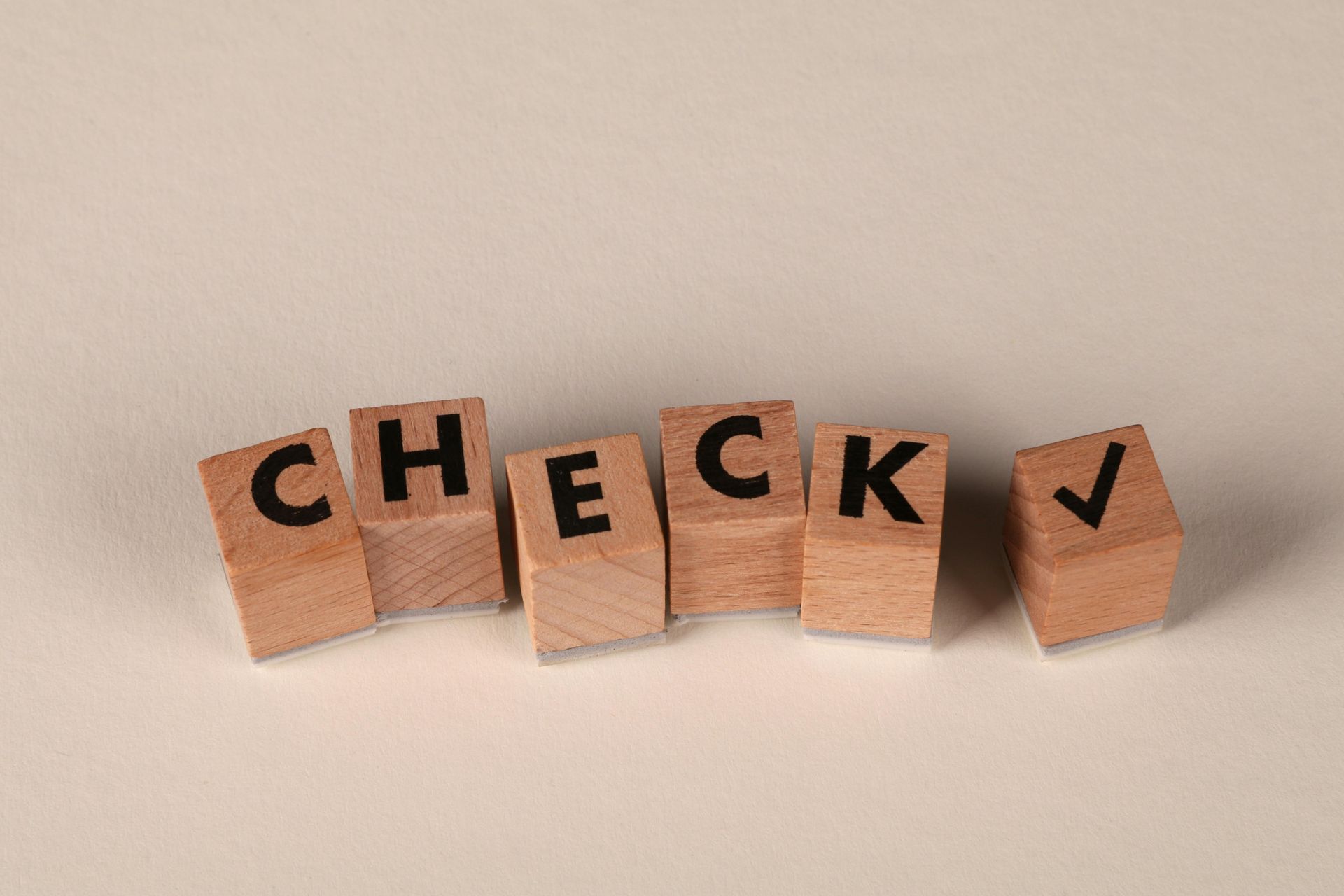How to Overcome a Final Trademark Rejection: Your Guide to Saving Your Brand
A Final Office Action from the United States Patent and Trademark Office (USPTO) can feel like a major roadblock for your trademark application. But don’t worry—it’s not the end of the line! With the right strategy, you can still protect your brand. This guide explains what a Final Office Action is, your options for responding to a trademark rejection, and how to choose the best path forward. Let’s dive in and explore how to overcome a USPTO trademark rejection.
What is a Final Office Action in the USPTO Trademark Process?
A Final Office Action is the USPTO’s way of saying they’re sticking to their decision to refuse your trademark application. It comes after you’ve responded to a Non-Final Office Action, but the examiner still believes there’s an issue, like a likelihood of confusion with another mark or incomplete documentation. This is their final stance—unless you take action to challenge it.
To keep your application alive, you can’t just repeat old arguments. Instead, you need to:
- Offer new legal or factual arguments,
- Submit fresh evidence or amend your application, or
- Appeal to the Trademark Trial and Appeal Board (TTAB).
If you don’t act by the deadline, your trademark application will be abandoned, leaving your brand unprotected. Working with a trademark attorney can help you navigate this process and increase your chances of success.
How Much Time Do You Have to Respond to a Trademark Rejection?
You have three months from the date of the Final Office Action to respond. Need more time? You can request a three-month extension for a fee, giving you up to six months total. Missing the deadline means your application will be abandoned, forcing you to either file a petition to revive or start over with a new application, which can be costly and time-consuming.
5 Options to Overcome a Final Office Action
Facing a trademark rejection? Here are five strategies to keep your application on track:
1. File a Request for Reconsideration
If you have new arguments, evidence, or changes to your application, a Request for Reconsideration lets you present them to the examiner. This isn’t about rehashing what you’ve already said. To succeed, you must:
- Provide new facts or legal arguments,
- Submit additional documentation, or
- Amend your application to address the refusal (e.g., clarifying goods/services).
For example, if your rejection is based on a likelihood of confusion, you could argue that the other mark is weak, your products are unrelated, or marketplace factors make confusion unlikely. You might also negotiate a consent agreement with the owner of the conflicting mark to allow coexistence.
2. Appeal to the Trademark Trial and Appeal Board (TTAB)
If you believe the examiner’s decision is wrong but you don’t have new evidence, you can appeal to the Trademark Trial and Appeal Board (TTAB), the USPTO’s administrative board for trademark disputes. You must file a Notice of Appeal within three months of the Final Office Action. After that, you’ll have 60 days to submit a detailed appeal brief. Missing this deadline risks dismissal and abandonment of your application.
This option works best when you think the examiner misapplied trademark law or misinterpreted the facts.
Evidence plays a crucial role in getting a trademark refusal overturned on appeal. The right kind of evidence can make all the difference, especially when it’s tailored to the specific grounds for refusal. Depending on why your application was denied, you might consider including:
- Documentation showing your trademark is used in a unique or distinctive way in the marketplace
- Expert opinions that support your position and lend credibility to your argument
- Historical records demonstrating acquired distinctiveness—proof that your mark has gained recognition through long-term use
- Examples of similar registered trademarks to show consistency and fairness in trademark office decisions
Putting together strong, well-organized, and persuasive appeal evidence can significantly improve your chances of success. The more clearly you show how your trademark meets the legal requirements, the more compelling your case becomes.
3. Combine a Request for Reconsideration and TTAB Appeal
Why choose one when you can do both? Filing a Request for Reconsideration alongside a Notice of Appeal is a smart way to keep your options open. You can present new arguments or evidence to the examiner while preserving your right to appeal if they don’t budge. If the examiner accepts your reconsideration, your application may move forward, and the appeal is dismissed. If not, your appeal continues seamlessly. This dual approach is a popular strategy for overcoming trademark rejections.
- What Happens When You File a Request for Reconsideration After a Trademark Refusal? Filing a Request for Reconsideration does not extend the deadline to file either a Notice of Appeal or a Petition to the Director. That means if you're serious about preserving your right to appeal, you must file the Notice of Appeal within the original three-month deadline—even if you’ve also submitted a request for reconsideration. If the USPTO denies your request for reconsideration and you haven’t filed an appeal in time, your trademark application will be considered abandoned due to an incomplete response.
- What to Expect from the USPTO During Reconsideration: When the USPTO issues an Office Action in response to your reconsideration request, it should address any new evidence you've submitted. But even if you don’t submit new evidence, the Examining Attorney can still introduce additional evidence related to the issue under reconsideration. For more detail, refer to the Trademark Manual of Examining Procedure (TMEP) §715.03.
Examiner Options When No Appeal Is Filed and No New Issues Are Raised in a Reconsideration
If your request for reconsideration doesn’t raise any new issues and you haven’t filed an appeal, the USPTO Examiner has a few options:
- Approve the mark for publication or registration if persuaded that the refusal has been overcome.
- Abandon the application if not convinced that the refusal has been resolved.
- Issue an Office Action denying the reconsideration, and note that although no appeal has been filed, there is still time left in the three-month appeal window.
- Issue another Office Action maintaining the refusal, but allow the applicant additional time to respond (a discretionary option under
37 C.F.R. §2.65(b)). This may come in the form of a
30-day letter, giving you extra time to address any outstanding issues.
If you're dealing with a final refusal and considering your next steps, it's essential to act promptly. Filing a reconsideration request alone won’t protect your right to appeal. To keep your application alive, make sure to file a Notice of Appeal within the three-month deadline, even if you're waiting on the outcome of your reconsideration request.
4. Challenge a Conflicting Trademark Registration
If your rejection is due to a conflict with an existing registered mark, you might be able to challenge it. Options include:
- Filing a Petition to Cancel with the TTAB if the mark is over five years old and vulnerable (e.g., not in use),
- Filing a Petition to Expunge or Reexamine if the mark was never used for the listed goods/services, or
- Negotiating a coexistence agreement with the mark’s owner.
These are separate legal actions that can take time and resources but may clear the path for your trademark registration.
5. Let the Application Go Abandoned and Refile
Sometimes, starting over is the best move. Letting your application go abandoned and filing a new one might make sense if:
- Your branding has changed,
- You need to revise the goods/services in a way the current application doesn’t allow, or
- A fresh start is cleaner.
Be cautious: if your rejection was for a likelihood of confusion, reapplying with the same mark and goods/services will likely face the same refusal unless the situation has changed.
How to Choose the Best Strategy for Your Trademark Rejection
The right path depends on why your application was rejected and what the USPTO will accept. Here’s a quick guide:
- Have new evidence or arguments? File a Request for Reconsideration.
- Think the examiner got it wrong? Appeal to the TTAB.
- Want to cover all bases? Combine a Request for Reconsideration and TTAB Appeal.
- Blocked by another mark? Consider cancellation, expungement, or a coexistence agreement.
- Application no longer fits your needs?
Let it go abandoned and refile.
A trademark attorney can help you evaluate your options and craft a response tailored to the USPTO’s concerns.
Why Acting Fast is Critical for Your Trademark
Time is ticking when you receive a Final Office Action. Missing the three-month deadline (or six months with an extension) means your application will be abandoned, potentially costing you your brand’s protection. Acting quickly preserves your options and avoids extra expenses or delays.
Final Trademark Rejection FAQs
Why Was My Trademark Application Rejected by the USPTO?
The USPTO may reject a trademark application for several reasons. Common grounds include a likelihood of confusion with an existing registered mark, the mark being too descriptive or generic, or the mark failing to function as a trademark. If your application is refused, the examining attorney will issue a non-final Office Action explaining the specific reasons.
Can I Still Use a Trademark That Was Rejected?
Yes, you can still use a trademark in commerce even if it was rejected by the USPTO. However, using an unregistered trademark comes with legal risks. Without a federal registration, you won’t benefit from the legal presumptions of ownership and nationwide exclusivity, and others may challenge your rights—especially if they hold a registered mark.
What Are My Options If My Trademark Application Is Refused?
If your trademark is refused, you have four main options:
- Negotiate co-existence with the owner of a conflicting mark
- Submit a request for reconsideration with new evidence or arguments
- File an appeal with the Trademark Trial and Appeal Board (TTAB)
- Submit a new trademark application using a revised or entirely different mark
How Does a Co-Existence Agreement Help Overcome a Trademark Refusal?
If your application is rejected due to a conflict with another trademark, you may negotiate a co-existence agreement or consent-to-use agreement with the other party. If successful, submitting this agreement to the USPTO may persuade the examining attorney to withdraw the refusal—though it’s not guaranteed. Keep in mind, these agreements can limit how you use your trademark and may come with legal risks.
What Is a Request for Reconsideration and When Should I File One?
A request for reconsideration is filed after receiving a final Office Action. You submit it directly to the examining attorney, along with new arguments or evidence supporting your trademark. This can be filed alone or with an appeal. It gives the examiner a chance to review and potentially reverse their decision without going through the appeals process.
What Happens If I File an Appeal With the TTAB?
Filing an appeal with the Trademark Trial and Appeal Board (TTAB) allows a panel to review whether the examining attorney’s decision was correct. This is a more formal legal process than a request for reconsideration and can be pursued simultaneously or instead of that option.
Should I Rebrand and File a New Trademark Application?
Sometimes, it makes sense to create a new mark and submit a fresh application—especially if the refusal is difficult to overcome. However, rebranding can be expensive. You may need to change your logo, product packaging, website, marketing materials, and possibly state filings. It’s important to weigh the costs and benefits before making this decision.
Trademark Solutions For You | Wilson Legal Group
Looking for Top Trademark Representation in the Dallas, Houston or Austin? Contact Wilson Legal Group!
At Wilson Legal Group, we are dedicated to providing exceptional trademark filing,
trademark reconsideration, and trademark appeal services.
Need help with trademark litigation, resolving trademark disputes, or securing trademark ?
Our experienced attorneys are here to deliver results!
Contact Us or Call 972-248-8080 for a Free Consultation!


Have an idea for a blog? Click and request a blog and we will let you know when we post it!











